Amber plants are a unique color, a rich color that captivates the eye.
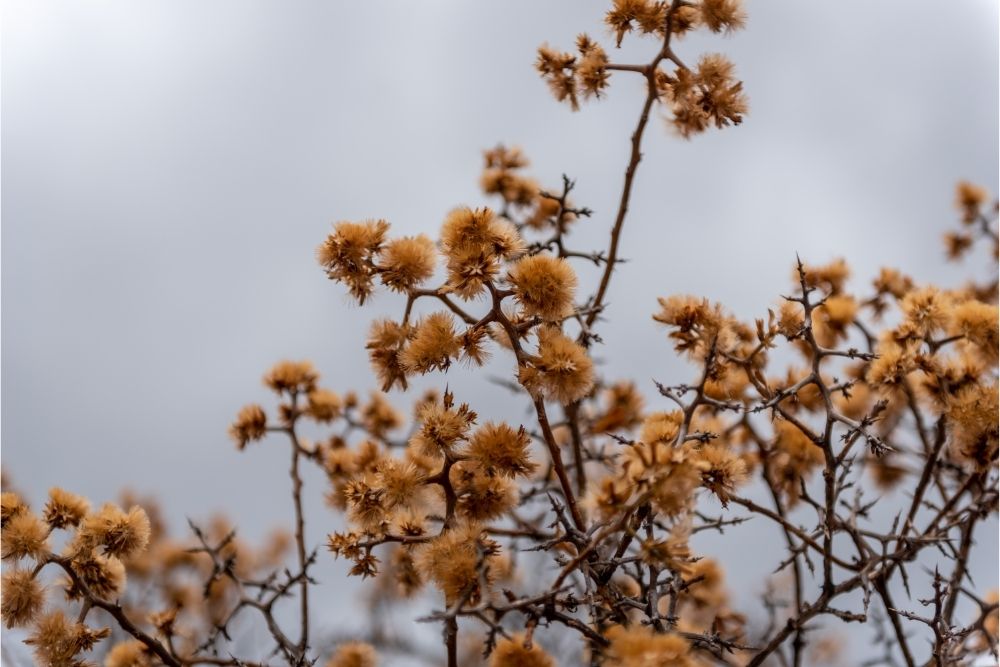
Not quite orange and not quite gold, amber represents the color of amber resin which is characterized as a fossilized gemstone that is widely recognized for its beauty.
The natural world is great at reflecting the beauty of all colors, however, one significant color that stands out in the plant kingdom is amber plants as they are often recognized for their striking and fiery appearance.
What better way to explore the richness of the plant world than to discover some of the most amazing amber plants in the world.
1.Prairie Fire
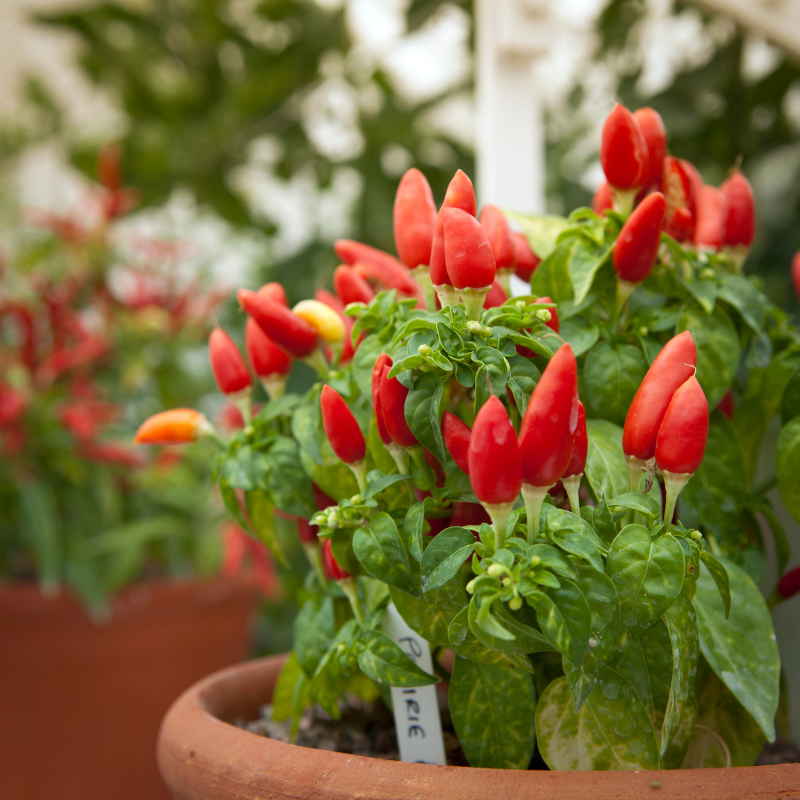
The prairie fire is classified as a perennial grass evergreen. Scientifically known as Carex Testacea, and commonly called the New Zealand hair sedge, the prairie fire is a unique species of grass that is recognized for its blazing bright orange strands.
From a distance, the prairie fire looks like a ball of flames. Due to its vibrant and distinct amber appearance, the prairie fire is often grown as an ornamental plant for lining gardens and ponds. Native to New Zealand, this bright plant can be found growing in various habitats as it thrives in sandy soil, clay and chalk.
2. Coral Bark Maple

Scientifically known as the Acer palmatum, the coral bark maple also commonly called Japanese maple tree is recognized for its rare attractive coral colored and splayed bark and amber maple leaves. Incredibly beautiful, this tree is widely admired and commonly grown for ornamental purposes as an extravagant feature.
It is also considered to be an easy plant to take care of as it is low maintenance and thrives in a variety of soil types. The coral bark is characterized as a relatively small tree as it grows up to 25 ft.
3. Autumn Fern
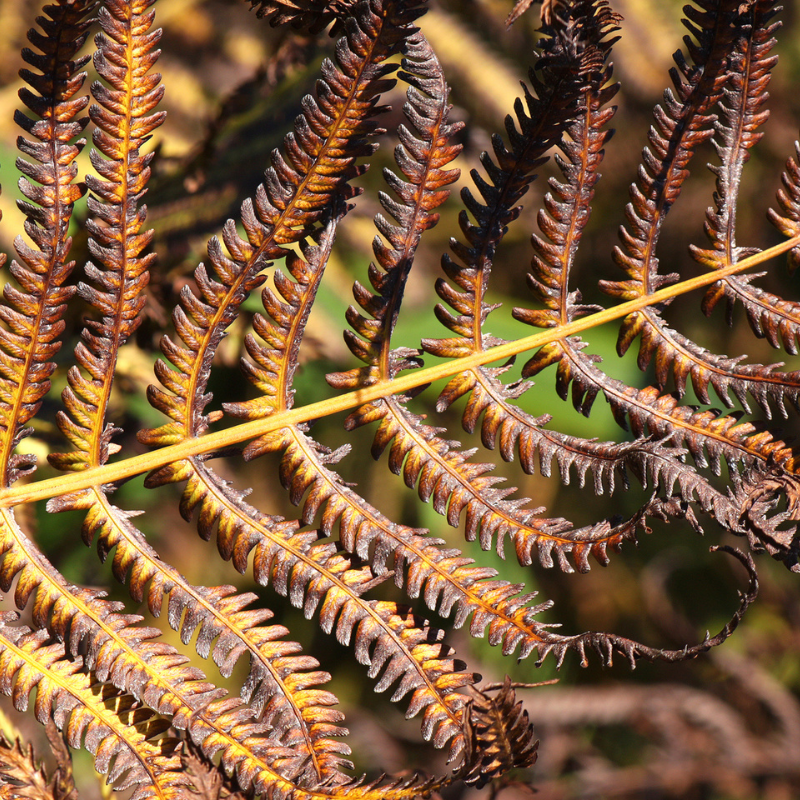
The autumn fern, scientifically known as Dryopteris erythrosora, the autumn fern is a significant species of fern that is recognized for its unique coloring. Native to several regions of Asia, the autumn fern is said to create quite a spectacle with its flame-like copper leaves.
The autumn fern can be found growing in various habitats from being in low shade conditions in forests and woodlands to being in higher conditions of mountainous regions.
4. Toffee Apple Tree
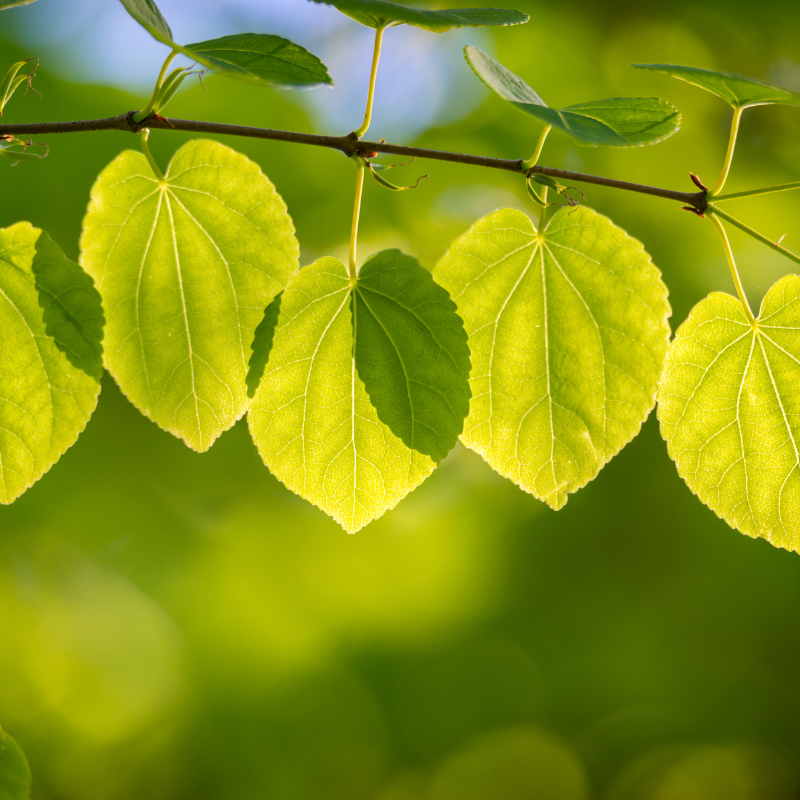
The toffee apple is as delicious in its appearance as it sounds. This brilliant and bright tree is recognized for its beautiful golden heart-shaped leaves. During the autumn, the tree creates a bold presentation of color with its leaves changing from red to orange and amber.
Scientifically known as Cercidiphyllum japonicum, the toffee apple tree is characterized as a beautiful yet significantly hardy plant. Commonly used for ornamental purposes, it is valued for its distinct appearance and is said to also produce a strong and sweet caramel scent produced by its leaves.
5. Glowing Ember
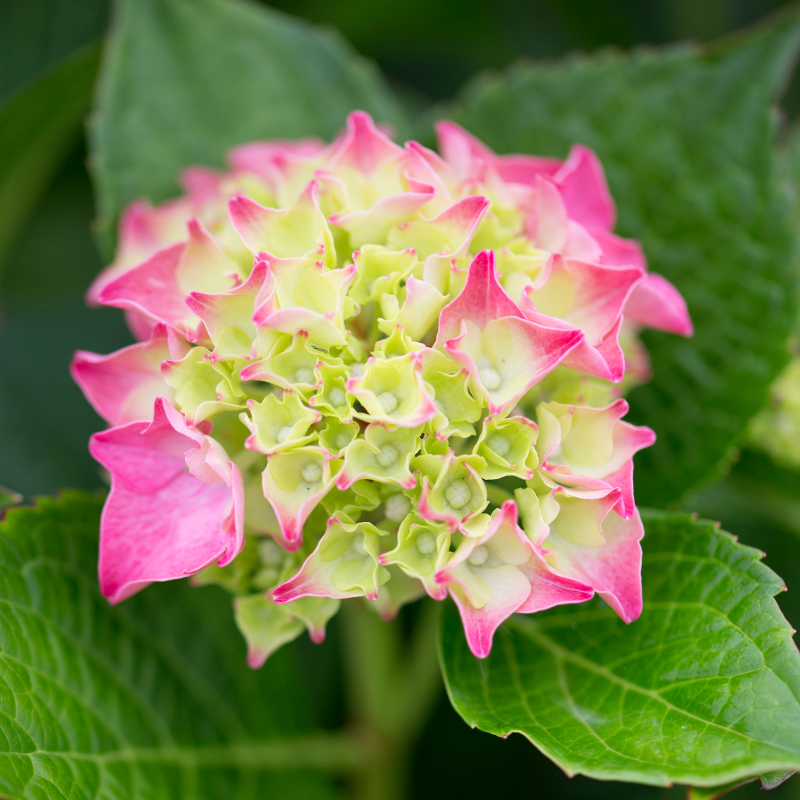
Scientifically known as Begonia, glowing ember is classified as a perennial flower that is recognized for its soft and thick amber petals. The begonia family consists of over 2000 varieties of plant species, each unique in its appearance and coloring.
The glowing ember plant is delicate in its appearance; its flowers gently rest in a bed of serrated dark green and purple leaves.
The glowing ember plant is widely cultivated for ornamental purposes due to its stunning appearance of flickers of amber. Though native to subtropical regions, the glowing ember can be found growing across the world.
6. Mahonia Volcano
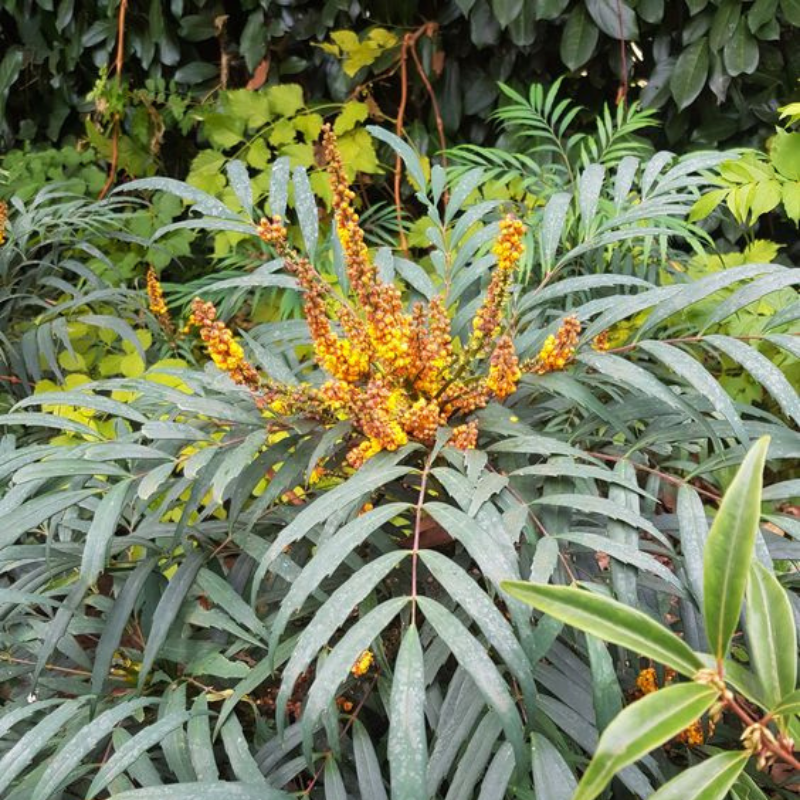
Mahonia volcano is a variety of the mahonia plant that is a member of the barberry family. The barberry consists of over 70 plant species. The mahonia volcano is a distinctive variety of mahonia that is recognized for its brilliant cluster of orange blooms.
The mahonia plant is native to eastern Asia and America, however, it is widely cultivated for ornamental purposes. In full bloom, the mahonia volcano presents a spectacular presentation of flickers of amber, orange, and yellow as it bursts with personality.
7. Jurassic Gold
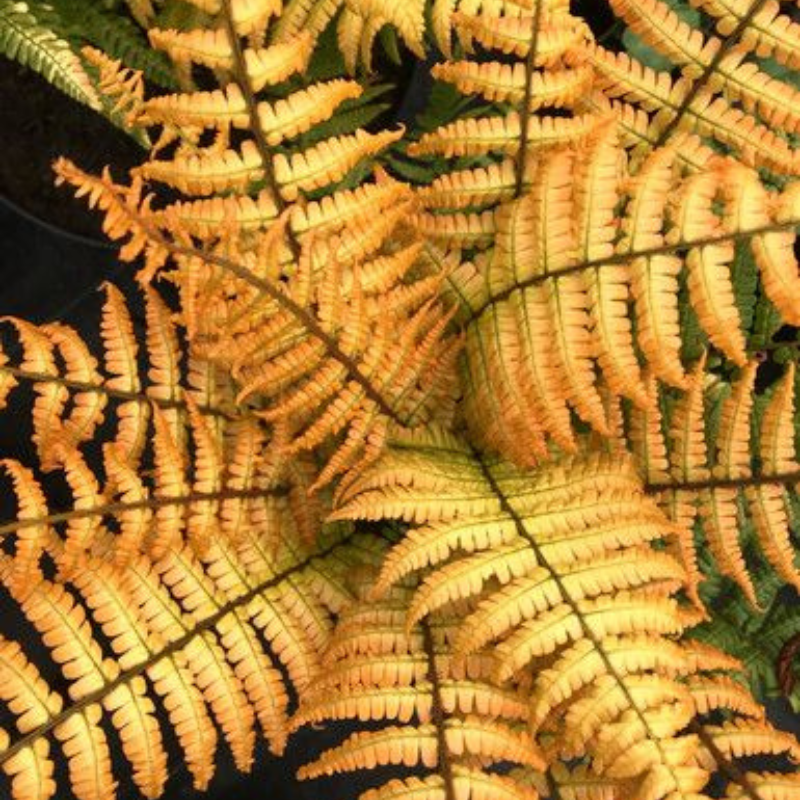
Similar to the Dryopteris erythrosora, the Jurassic gold fern, scientifically known as the Dryopteris wallichiana is a striking variety of fern that features bright golden serrated leaves. The semi-evergreen fern can be found growing in alpine woodland as it thrives in moist soil.
The Jurassic gold fern is native to several regions of the world including the Himalayas, Mexico, Jamaica, and Hawaii, however, it is widely cultivated for ornamental purposes and can commonly be found across Europe.
8. Orange Lily
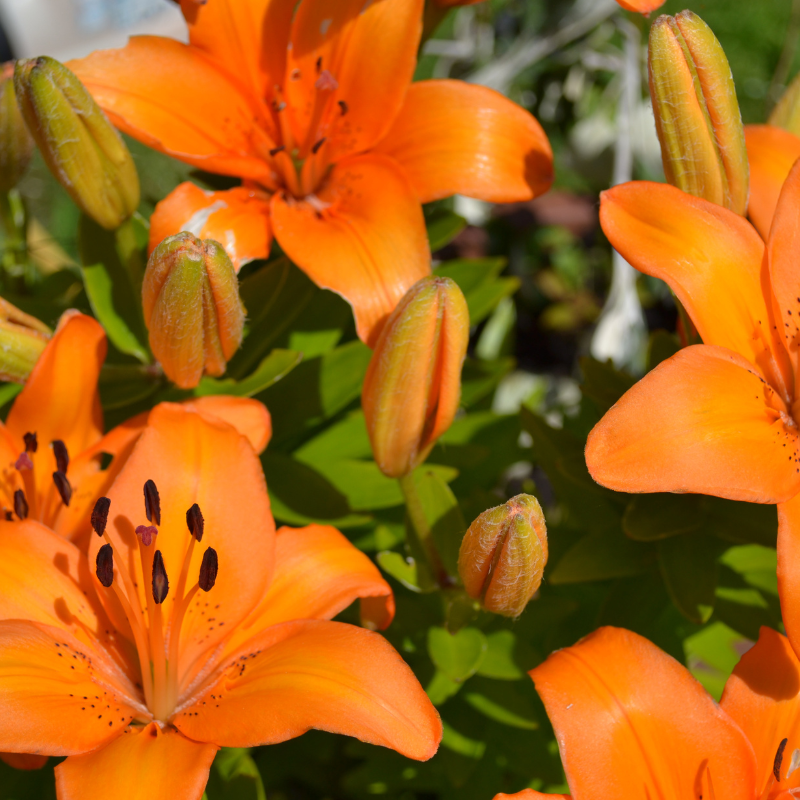
The orange lily is one of the most stunning flowers around with its brilliant orange petals. Scientifically known as Lilium bulbiferum, the orange lily is a significant member of the lily family. The lily is a unique plant that is recognized for its underground bulbs and its striking star-like blooms.
Though lilies are commonly associated with their strong distinctive sweet floral scent, the orange lily differs from others as it is characterized as scentless. However, its scentlessness is made up by its fabulous coloring.
Though commonly grown as an ornamental plant, be cautious if you live with cats as the orange lily is considered to be significantly toxic to cats.
9. Lantana

The lantana plant is classified as a perennial flowering plant that is recognized for producing tiny delicate blooms. The lantana is established as a significant member of the vervain family which is known for its sweet-scented clusters of colorful florets.
Though these flowers can be found in a variety of colors, some of the most stunning florets are yellow, orange, and red, which cluster together to create a floral flame. Native to tropical regions across Africa and the Americas, the lantana plant thrives in warmer climates.
Due to its striking appearance, it is widely cultivated across the world and can be found from Australia to Europe.
10. Pansy

The pansy stands to be a widely cultivated ornamental plant that can be found bordering numerous gardens. Characterized as a wildflower of Europe and Asia, the pansies are recognized by their unique tricolor characteristic and delicate, velvet petals.
These wildflowers can be found in a variety of colors and bicolours which include everything from amber to yellow, red, white, and purple.
11. Flowering Maple
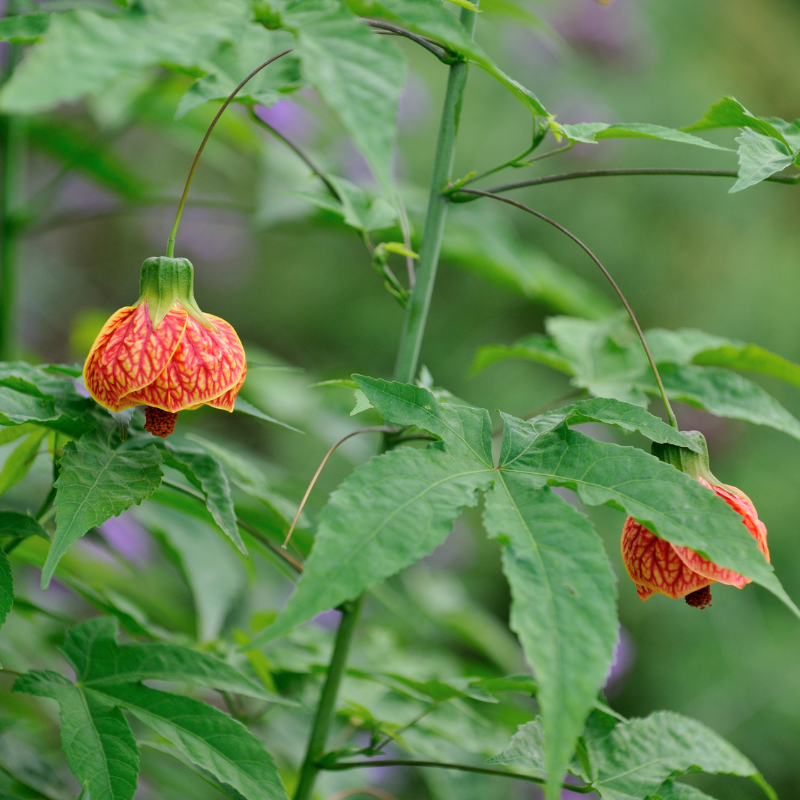
Scientifically known as Abutilon, the flowering maple is classified as a member of the mallow family. Though a flowering plant, the flowering maple plant is characterized as a bristly and herbaceous shrub due to its hairy and thick foliage.
The flowering maple is unique in its appearance as it features bell-shaped wafer-like petals that can be found in a rich amber color and covered in red veins.
12. Butterfly Weed
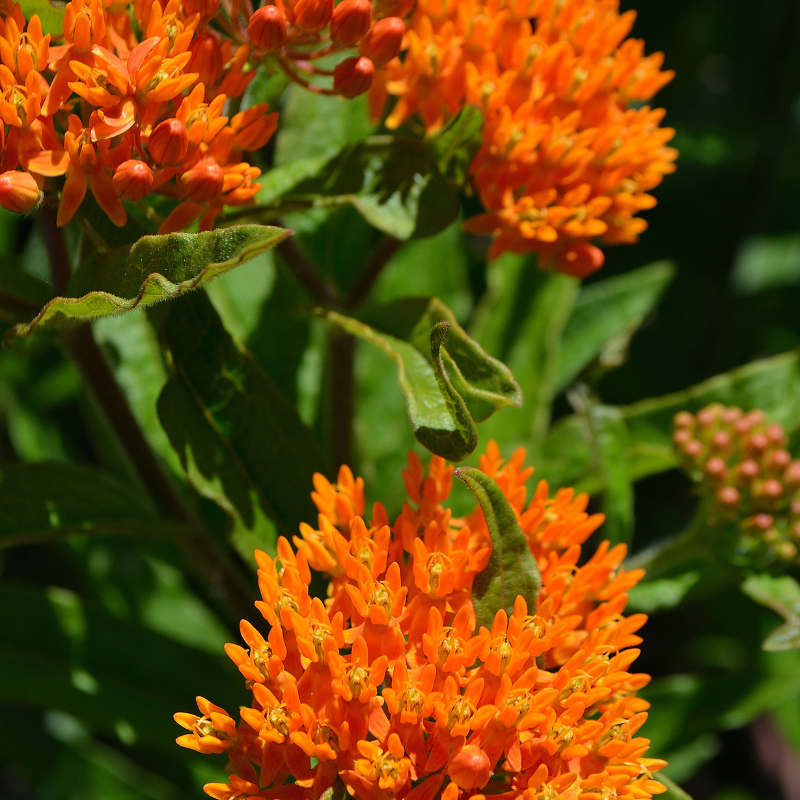
Coined as the butterfly weed, the butterfly weed is classified as a species of the milkweed family. Scientifically known as Asclepias tuberosa, the distinct species of milkweed has been recognized by its beautiful florists and the sweet scent it produces.
The plant’s name derives from its most popular pollinator, the butterfly. Butterflies are significantly attracted to this plant not only for its bold and bright amber blooms but also for its sweet-scented nectar. Though loved by butterflies, the butterfly is considered toxic.
13. Chinese Lantern
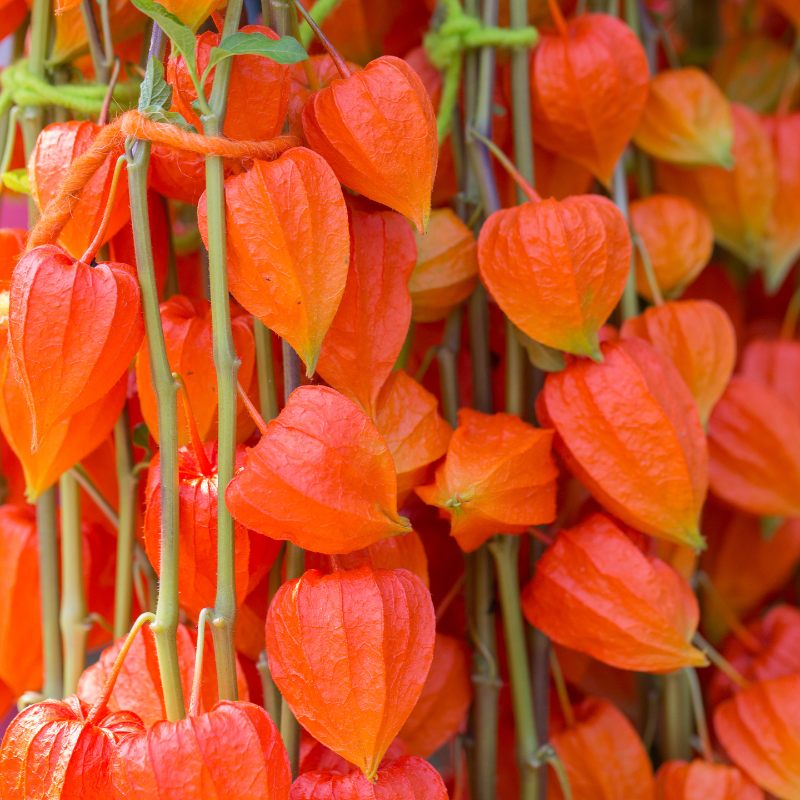
The beautiful Chinese lantern is classified as a significant member of the nightshade family. The flowering plant presents a distinctive appearance that resembles that of a scotch bonnet chili or lantern.
The Chinese lantern is recognized for its thin paper-like texture and bold coloring which consist of a rich amber or bright red shell which contains a single fruit.
Classified as a close relative of the cape gooseberry, the Chinese lantern is similar in its shape, texture, and scent. However, the Chinese lantern differs from the cape gooseberry as it is native to Asia and Europe rather than the Americas.
14. Common Marigold
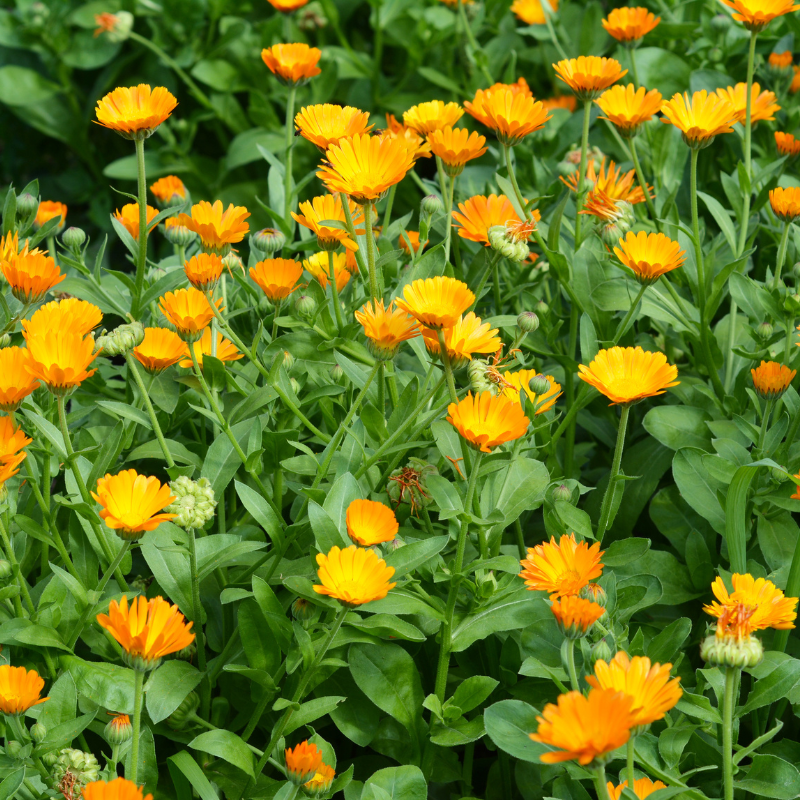
Scientifically known as Calendula officinalis, the common marigold is classified as a perennial flowering plant that is established as a member of the daisy family. The common marigold is one of the most popular ornamental, herbaceous plants recognized for its bold orange coloring and its rich and sweet floral scent.
Native to Europe, the common marigold is widely cultivated for ornamental purposes as it is easy to look after and is characterized as a durable plant as it thrives in a variety of soil types. Besides being used for ornamental purposes, marigolds are considered to be edible and are commonly used to make tea or added to salads.
RELATED: 26 Types Of Marigold Plants (Including Photos & Facts)
15.Trumpet Vine

The trumpet vine is a popular flowering plant for pollinators such as hummingbirds with its distinctive tubular-shaped bright orange-red blooms. Scientifically known as Campsis radicans, the trumpet vine is native to North America and is recognized for uniquely shaped flowers and climbing vines.
As a perennial vine, the trumpet vine can be found growing rapidly along sidewalks, rooftops, and walls due to its self-clinging characteristic.
Though native to North America, the trumpet vine can most commonly be found growing in the Mediterranean where it is widely cultivated for ornamental purposes. Though delicate in appearance, the trumpet vine is significantly hardy as it is tolerant to both hot and cold weather conditions.
16. American Bittersweet

The American bittersweet vine is classified as a perennial vine that is a member of the bittersweet family. Scientifically known as Celastrus scandens, the American bittersweet is a species of vine that is recognized by its distinctive yellow bark and bright amber fruit.
The vine is known to grow on other vegetation, consequentially killing saplings and restricting the progression of the surrounding vegetation.
Unlike many other flowering plants, the American bittersweet is not recognized for its flowers as its blooms stand to be unimpressive due to their colorlessness and unscented nature. Instead, it is the fruit of the plant that stands out.
Though appetizing in appearance, the fruit of the American bittersweet is incredibly toxic and poisonous to humans.
17. Nasturtium
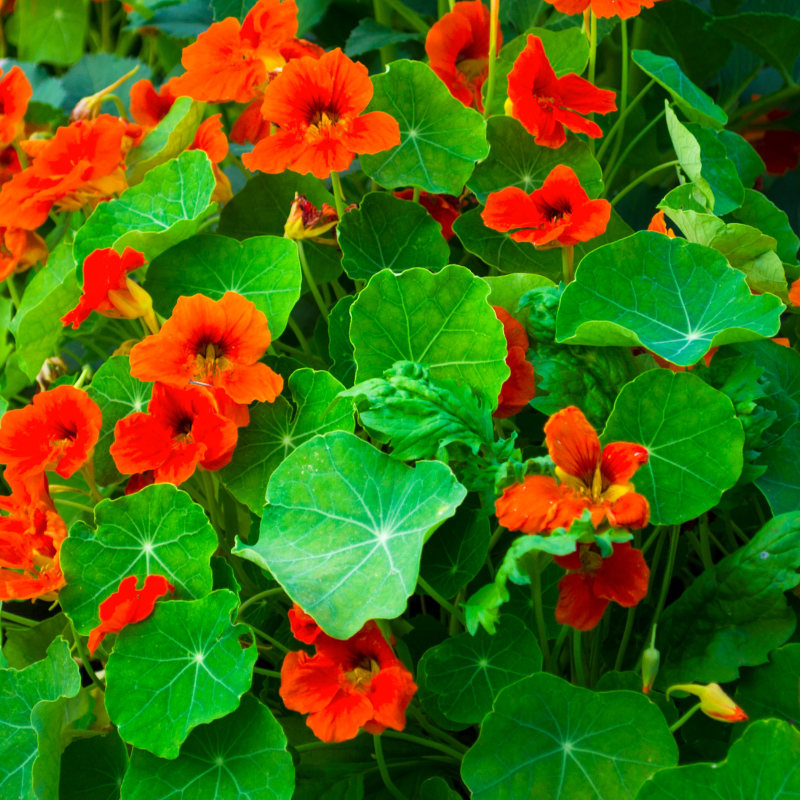
The nasturtium, scientifically known as Tropaeolum, is classified as a perennial flowering plant that is a member of the Tropaeolaceae. The nasturtium plant is said to be similar to a pansy in its delicate appearance and bi and tri coloring.
It can be found in a variety of colors from orange, amber, and yellow to white, cream, and red. However, unlike a pansy, the nasturtium is also characterized as being similar to a variety of watercress due to the oil it produces is similar to that of watercress.
Hence its leaves are commonly used for culinary purposes due to their peppery watercress flavor. This flowering plant is native to America. Though delicate in its appearance, the nasturtium is a significantly hardy plant as its roots can withstand extremely cold conditions.
18. Crown Imperial
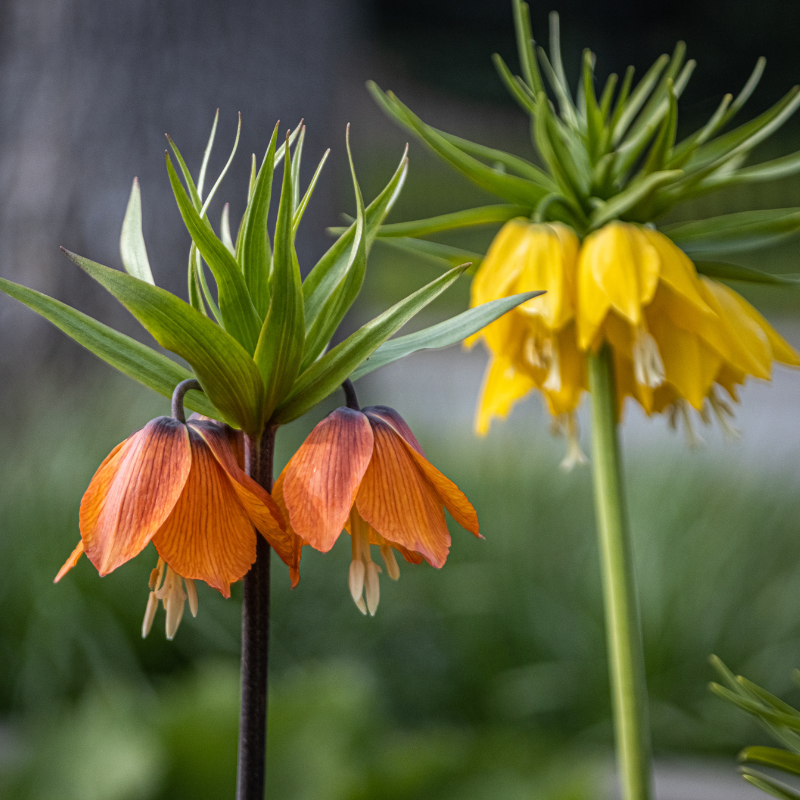
The iconic crown imperial is a stunning flowering plant that is classed as a unique member of the lily family. Though not obvious from its heritage on face value, the crown imperial possesses common characteristics of a lily, such as its long glossy leaves and its underground bulb.
The crown imperial is recognized for its incredible amber-red bloom that hangs upside down with its stem resting at the top bearing the shape of a crown. Unlike many other lily varieties that produce a sweet nectar scent, the crown imperial is said to produce a somewhat repelling odor.
The unique plant is native to Iraq, Turkey, Pakistan, India, Afghanistan, and Iran, however, due to its distinct appearance, it is widely cultivated and can commonly be found across Europe and America.
RELATED: Alocasia Imperial Red: A Plant Lover’s Care, Propagation, and Watering Guide
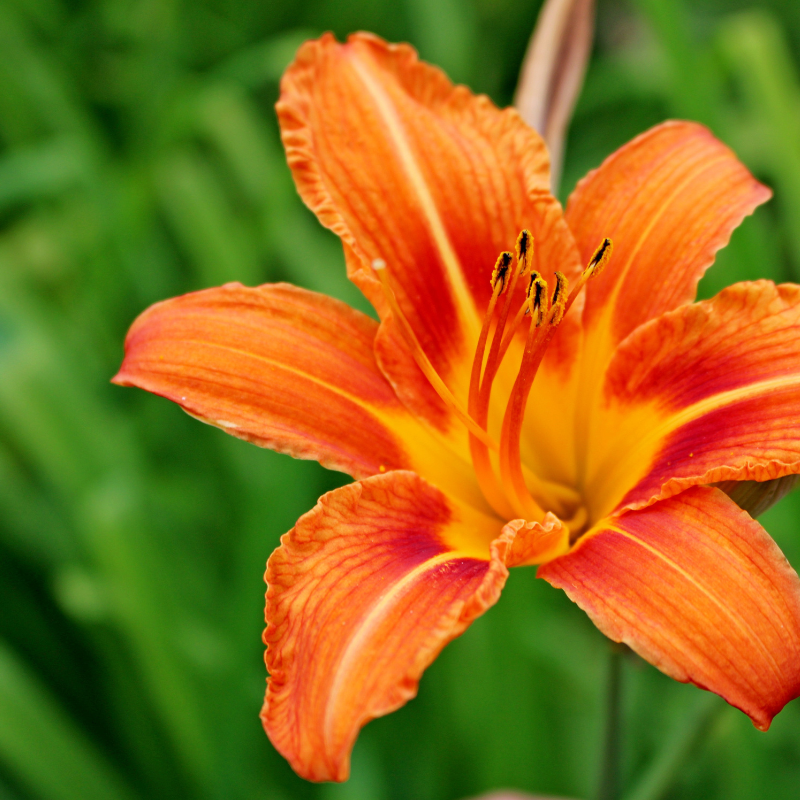
19. Daylily
The day lily is another unique variety of the Asphodelaceae family. The day lily is classified as a species of flowering plant is native to Asia. Due to its bold appearance and sweet distinctive scent, the plant is widely cultivated and currently has over 80,000 cultivators.
Though known as the day ‘lily,’ confusingly the day lily isn’t botanically classified as a true lily. Its name derives from the similar shape, scent, and texture of a lily. Unlike the true lily, the daylily isn’t considered toxic to humans as it is frequently used for culinary purposes. However, it is highly toxic to cats.
Takeaway
From fiery orange grass to bold amber Chinese lanterns, the variation of amber plants is unbelievable. Each plant is unique in its shade, shape, and texture but all are equally beautiful as they stand to offer something of value, whether it be their appearance, scent, or unique characteristics.







